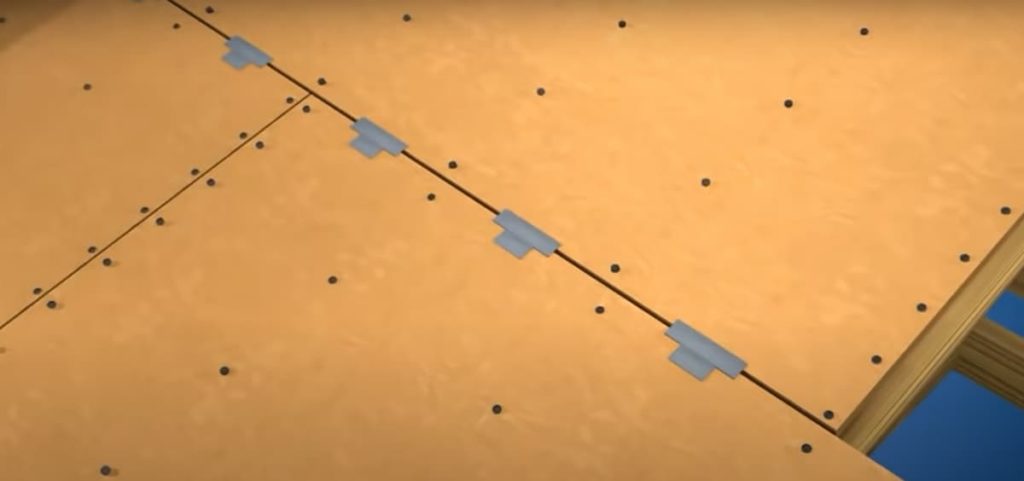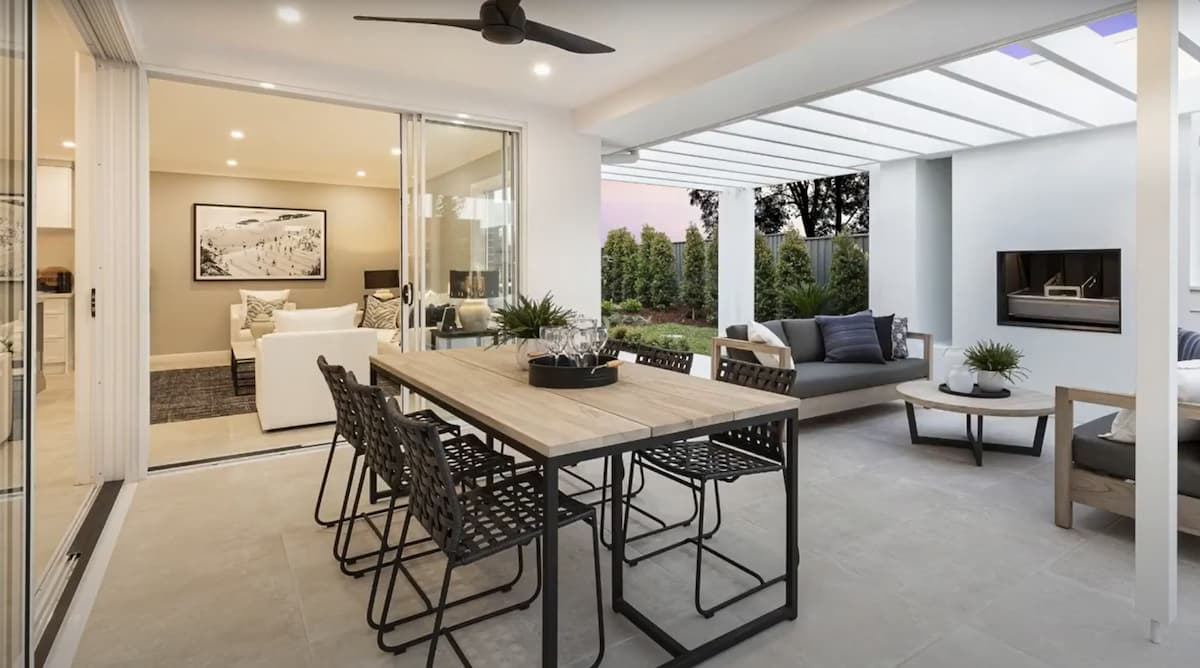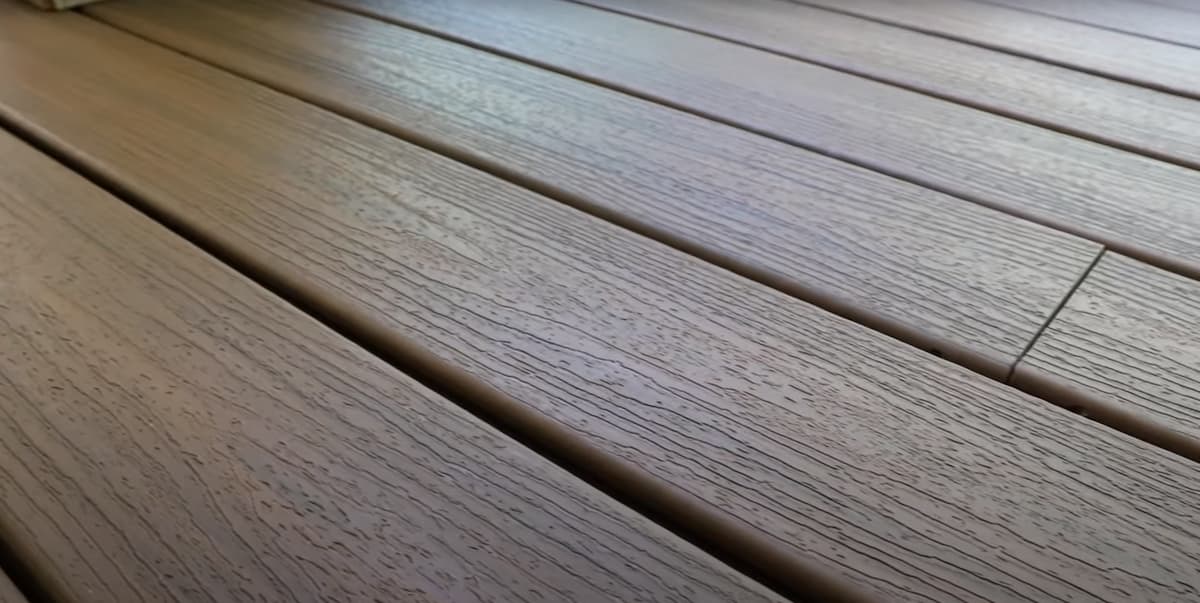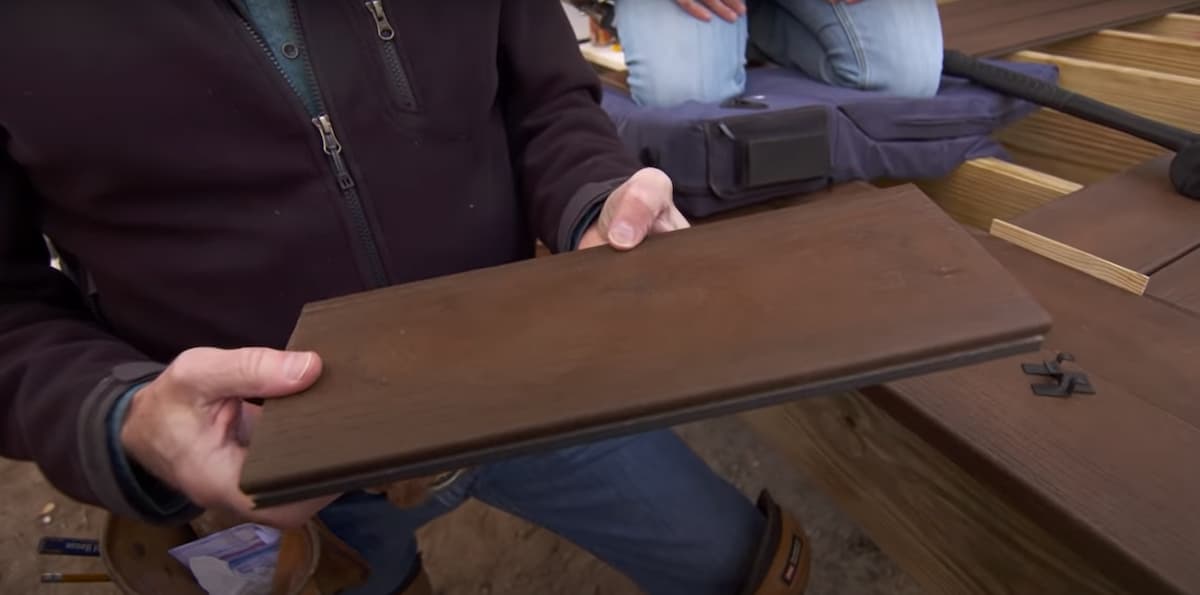Most of us would guess that a roof is simply made out of shingles, but this couldn’t be further from the truth. While shingles are important in keeping our home protected from the elements, other portions of the roof play a far more significant role. Your roof wouldn’t be nearly as strong as it is today without things like rooftop decking.
While it is never seen by the naked eye, it is critical to consider your decking’s condition before replacing your shingles on your roof. Continue reading to learn more about how important their roof deck plays in the overall safety and structural integrity of your property.
What is Roof Decking?
In a nutshell, roof decking, often known as roof sheathing, is the fundamental aspect of any roofing system. It’s the supporting wood, concrete, steel, or other material on which the shingles or tiles are placed. Roof decking is a protective layer that serves as a seal for your home and is made mostly of wood, concrete, or steel. Your property would be susceptible to leaks, water damage, and other problems if you didn’t have roof decking.
Your roof is more than the visible shingles. It’s a mix of many different roofing materials and parts that work together to keep your house safe from the weather. Roof decking is one of the most essential elements in your roof system, regardless of material. It’s literally the groundwork for your entire roof structure. That’s why, before getting a new roof replacement (or even roof repairs), you could understand how crucial your roof decking is.
The Importance of Roofing Materials
As previously said, it is an essential component in the construction of your roof since it provides a foundation for it. Your home’s rafters are connected directly to the roof decking. The entire weight of the roof is supported by the roof decking after the shingles are installed. This isn’t something to take lightly.
Roof decking, in addition to being an essential component of your roof, is also a structural element that protects the stability of your house. Roof decking keeps the rafters aligned while allowing them to move over time.
Although roof decking has not always been a part of house building, many roofing contractor experts now realize that it is an essential structural component of every home. As a result, it’s critical to inspect your roof decking for damage and integrity on a regular basis.
Benefits of Investing in New Decking
With a variety of different styles, brands, and materials available on the market today, choosing a new roof decking can seem like quite a daunting task. While this is true for many home improvement projects, you don’t have to choose roofing materials carefully just because they’re expensive. A reputable roofer may be able to provide you with advice regarding the most appropriate products based on your particular situation.
As previously said, it’s imperative to regularly inspect your property’s current condition so that several problems may be prevented before they occur. This means regularly inspecting your house’s foundation as well as its roof structure. Investing in some brand-new decking is one of the most important things you could do if your current material is damaged or falling apart.
What is Roof Decking Foundation?
If you have damaged roof decking, your entire house could be compromised. This could potentially result in the loss of many valuables inside. Your property’s foundation is also at risk if your roofing has been compromised for an extended period of time.
The term “foundation” may seem vague, but it doesn’t have to be. A home’s foundation consists of everything that holds up a house including walls, pillars, and floors. If these aren’t protected by the material holding them up (the roof), they are more likely to be damaged or destroyed within a short amount of time. Don’t make the mistake of thinking this isn’t possible because other people haven’t experienced any issues with their homes and their roofs.
If you want to protect your home from damage, you need to invest in a new roof decking ASAP. If you’re not entirely sure what kind of material is best for your home’s needs, get in touch with a reputable provider. They can help answer any questions that you may have regarding the condition of your current roof structure and what kinds of materials are most appropriate for your particular situation.
Types of Roof Decking Material
There are four types of roofing material to choose from that are commonly used in the construction industry to support roofs. These materials include wood, steel, concrete, and plastic.
What is Roof Decking Made of Wood?
Wood has been used for homes since ancient times. It’s no surprise that it’s still one of the most popular roof decking materials today. Wood is perhaps one of the least expensive options available on the market today and has a variety of benefits such as affordability and availability.
Wood has also been long-known for its insulation properties in addition to its aesthetic appeal.
What is Roof Decking Made of Steel?
Steel is another popular material used in the construction of homes and structures around the world today. Steel decking materials are known for their durability and strength allowing them to be exposed to elements like wind, heat and rain for extended periods of time.
Steel is also an excellent insulator and can help to repel heat in the summer and retain warmth during the winter months.
Steel remained relatively low until recently mainly due to its high cost compared to other materials like plastic or wood which is more affordable (of course, depending on how much you can spend). It is now becoming more common at home improvement centres across Australia. Some contractors even claim that it provides better durability than other materials.
What is Roof Decking Made of Concrete?
Concrete roofing products are often used together with steel in some types of construction projects because they offer some incredible benefits. Concrete decking products provide great insulation for homes and can be easily moulded into all kinds of shapes.
Concrete materials are also long-lasting and relatively affordable, which makes them appealing to many homeowners around the world. Concrete is seen more often on commercial structures because it provides stronger support than other options.
What is Roof Decking Made of Plastic?
Plastic, also known as composite or PVC, has become increasingly popular with home builders due to its sturdiness and resistance to heat fluctuations. It’s important to note that plastic roofing can be costly compared to other types of roof decking material especially if you are comparing its cost against wood or steel products.
The plastic decking material is yet another very popular choice when it comes to roofing products. Plastic is often considered to be one of the most durable materials on the market today. It’s also lightweight, but still capable of holding up homes or structures for many years at a time before requiring replacement.
Plastics aren’t just limited to concrete roof decking material either. Some kinds of plastic are moulded into specific shapes that allow these products to serve as railings, doorways, and even floors. Having more than one plastic roof decking material is great because it allows you to choose which type of material may best suit your home or office.

Oriented Strand Board Roof Decking
Another point to consider is the type of material that your roof decking is made out of. You have probably heard about OSB ( oriented strand board ) roof decking, also known as Fiberboard. The oriented strand board is one of the most popular options for home roofs because it can be easily fabricated into whatever shape you need.
If you are planning to use an oriented strand board for your roof, you could know that it is manufactured with a combination of wood strands and wax impregnated resins. This helps to make the product more durable, resulting in less splitting during construction compared to other types of lumber options.
Why You Shouldn’t Add New Shingles to Your Roof?
If you are not sure why it is better to plan for a roof replacement instead of adding shingles to the roofing structure, here are some reasons that might convince you. The first reason is that all roofing types have their maximum life span which depends on their quality. The average life span of residential roofs is 20 years, for commercial roofs, it is 15-20 years.
Most roofing shingles are made of asphalt or fibreglass and even though some companies make better versions with extended life spans, the roof replacement may need to be done earlier than expected due to other reasons like poor installation, leaks or damage caused by natural wear and tear. Also, most roofing shingles are not designed to last the entire life span of your roof so they may need to be replaced sooner than you’d need to do a roof replacement.
Modern roofing shingles with enhanced designs, colour schemes and textures offer homeowners more options than ever before when it comes to exterior home improvements. However, just because shingles can easily be added on top of an existing roof does not mean that you could do it every time a problem occurs or even if one never did happen in the first place.
How to Select Roofing Contractors
If you want to improve your current roof while still ensuring that you get the maximum number of years out of its lifespan, adding new shingles might not be a good idea for you. There is a way to add a new look, however, without compromising the integrity of your existing roof. You can opt for a full roof replacement at a fraction of the cost by selecting an experienced roofing contractor who specializes in roof replacements instead of roof repairs.
If you are searching for a fantastic roofing contractor, you may probably be overwhelmed with the sheer number of listings on the web. To make things easier for yourself, it is wise to enrol the services of an experienced roofing professional who has many years of experience in his business. Talk to your family and friends about their experiences with different types of roofing contractors and then choose one that may prove beneficial to you the most.
Benefits of Investing in New Roofing Materials
Investing in new roofing materials comes with several benefits. First of all, the roof may be covered by a warranty which means that if a problem occurs in the early years, you can always have it fixed for free. Also, investing in new roofing material means that your house or business gets a brand new look without having to pay a tonne of money for a full renovation.
Another reason why you could not add shingles on top of an old one is that this type of solution usually involves only adding more layers on top of the original structure instead of replacing what’s already there. If your building features clay tiles or asphalt shingles, no matter how much extra weight they add, these solutions may actually damage the underlying layer instead of reinforcing it.
Roof Deck and Roof Replacement
The underlayment is an essential element of your roofing system that supports your shingles and protects them from various kinds of damage. This layer may determine how long your roof may last, therefore if you are planning on adding new layers on top of it, make sure that they are designed for extra durability too.
The first thing you could know when searching for new decking material is what type of underlying structure it could support. Consider all the factors, including the air conditioning equipment you might have installed and where it may go after you got the roof replaced. You can easily find out what kind of support you may need by contacting a responsible roofing contractor, who may evaluate the condition of your buildings roofing system and recommend the most optimal solution.





